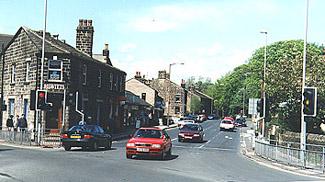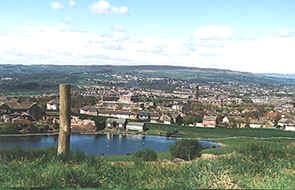
View from the Billing |
Rawdon
lies eight miles north-west of Leeds, half-way to Ilkley. It stands on
a hill above the Aire and only a few miles to the north is Wharfedale
which lies on the other side of the Chevin. From Rawdon’s highest
point, the Billing, on a clear day York Minster can be glimpsed to the
east and Pendle Hill is visible to the west. At night the street
lights at Calverley and Baildon can be seen strung along the hills
like, as my eleven year old said, one of those join-the-dots puzzles. |
| You won’t
find Rawdon in the tourist guides. It isn’t particularly fashionable
or pretty in the chocolate box sense. However, it is very much a real
place full of real people with buildings and landscape redolent of the
agricultural and industrial history of this part of England. It is
quintessential West Riding. It is what Yorkshire was and still is if
you scratch away the modern-day gloss and stop the traffic for five
minutes. |
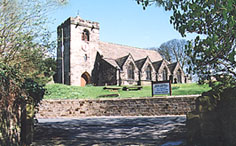
St.
Peter's Church |
|
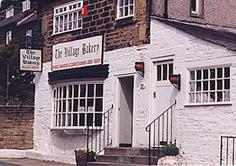
The Village Bakery |
Old Rawdon
is built along Town Street by St Peter’s Church. It is made up of
stone-built houses of various types, ages and dimensions, the older
ones blackened by past industry. Another area of Rawdon centres on the
green next to the Harrogate Road. A large number of mature trees is a
feature of the place. Then there is the part of Rawdon known as Little
London below Micklefield Park. When it was being built in the 1830s so
many buildings seemed to be under construction that the locals
christened it London. As a result the streets were named accordingly -
London Lane, London Square, Lombard Street. Handloom weavers worked in
the second-floor rooms built with large windows designed to maximise
available light. The area became known as Clattergate because of the
constant noise of the shuttles. That was long ago. Today the narrow
streets and stone cottages of Little London are highly prized and
much-favoured by house buyers. |
Between
Little London and the Aire are Cragg Woods, falling down the hillside.
Again this is a little-known place but a gem. Here nineteenth century
millionaires who had made their fortunes in the Bradford woollen mills
built themselves mansions of staggering proportions. Many still
remain, hidden in the trees away from the unmade roads.
Until the early 1970s Rawdon was part of what was officially called
Aireborough. Most people in Rawdon regard it as still being very much
independent of both Leeds and Bradford. However, in the local
government reorganisation of the time it became part of Leeds
metropolitan district. Like many other similar towns and villages
Rawdon retains a defiant detachment from Leeds which is seen as an
occupying force with the interests of local residents last on its list
of priorities. |
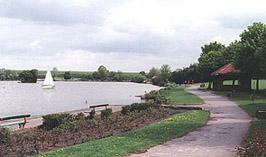
Yeadon
Tarn |
Close to Rawdon is Yeadon, once a mill town typical of the area. During the
Second World War Lancaster Bombers were built at Yeadon and, not
surprisingly, the Germans wanted to bomb the factory. The Luftwaffe followed
the rivers, reflecting the moonlight, from the North Sea. In the black-out
they were looking for Yeadon Tarn, a small lake near the factory and marked
on their maps. But unknown to the Germans, the Tarn was drained for the
duration of the war. It wasn’t there. Furthermore, and this is real Dad’s
Army stuff, wooden cows were placed on the roof of the aircraft factory and
regularly moved around. Dad’s Army perhaps but the Germans never found the
factory. Production continued throughout the war.
|
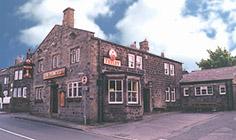
The
Princess |
If you
come to Rawdon visit the Princess in Little London. This is a pub
where indeed everyone knows your name and where you can find some of
the most entertaining conversations as well as outrageously incorrect
views in Christendom. Enjoy the views and the sky on a fine evening.
Walk through Cragg Woods and up to the Billing.
So there you are. Rawdon, West Riding. Nothing special, but rather
special. Not Chicago but certainly my kinda town.
David Brearley
©Yorksview 2002 |
HOME
PLACES
DIARY
TRIVIA
